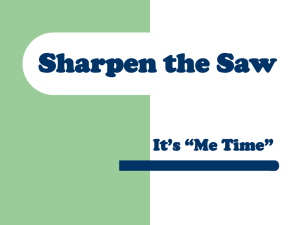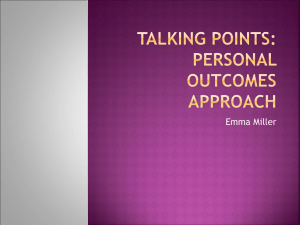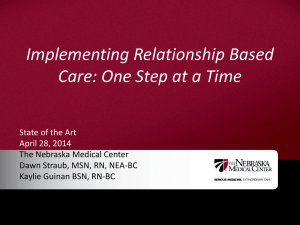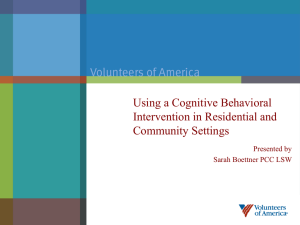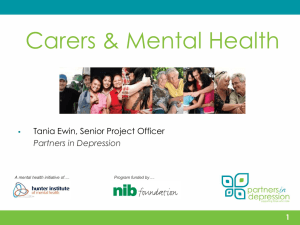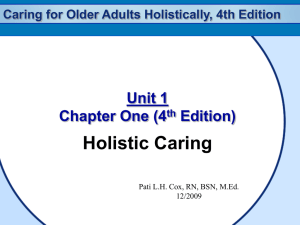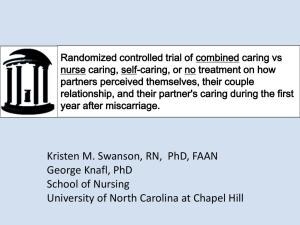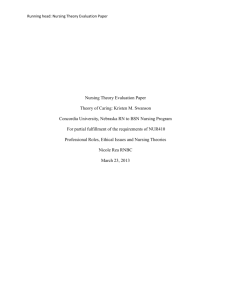Normandale-Caring-Presentation
advertisement
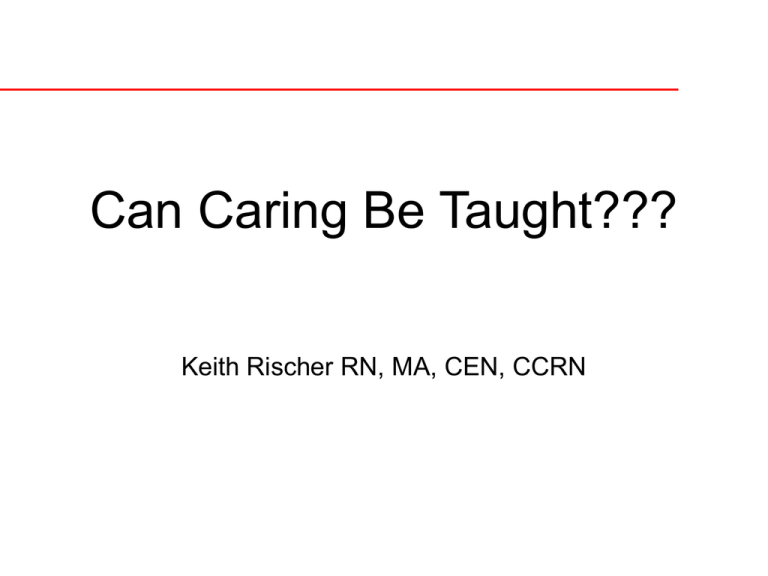
Can Caring Be Taught??? Keith Rischer RN, MA, CEN, CCRN Nursing’s Historical Legacy of Caring “The spirit in which she does her work makes all the difference. Invested as she should with the dignity of her profession and the cloak of love for suffering humanity, she can ennoble anything her hand may be called upon to do, and for work done in this spirit there will ever come to her a recompense far outweighing that of silver and gold…. Caring Defined… “Swanson defines…“Caring is a nurturing way of relating to a valued other toward whom one feels a personal sense of commitment and responsibility” “Practicing in a caring manner leads to the nurse’s well being, both personally and professionally. Personal outcomes of caring include feeling important, accomplished, and whole. Professionally practicing caring leads to enhanced intuition, empathy, clinical judgment and work satisfaction.” Kristen Swanson RN, PhD, FAAN How This Caring Theory Came to be… I. 20 women who miscarried “What constituted caring in the instance of miscarriage?” II. 19 careproviders in the NICU “What is it like to be provider of care in the NICU” III. 8 high risk young mothers who received LT public health nursing intervention “How did you recall and describe your nurse-patient relationship after intervention?” Swanson’s Framework of Caring Knowing (Empathetic Understanding) Striving to understand an event as it has meaning in the life of the other Avoiding assumptions Centering on the one cared for Assessing thoroughly Seeking cues Engaging the self Swanson’s Framework of Caring Being With (Emotionally Present) Being emotionally present to the other Being there Conveying availability Sharing feelings Not burdening Swanson’s Framework of Caring Doing For (Enact For) Doing for the other as he/she would do for oneself…but no more Anticipating their needs Performing competently/skillfully Preserving dignity Swanson’s Framework of Caring Enabling (Empowering) Facilitating the other’s passage through life transitions and face a future with meaning Informing/explaining –patient education Validating-giving feedback Generating alternatives-thinking it through Swanson’s Framework of Caring Maintaining Belief (Esteem) Sustaining faith in the other’s capacity to get through an event/transition and face a future with meaning Believe in/holding in esteem Maintaining a hope filled attitude Offering realistic optimism Application in Clinical Setting CLINICAL WEEK #1 I.Knowing (Empathetic Understanding) Striving to understand an event as it has meaning in the life of the other Choose at least 2 to implement Nursing Caring Interventions Evaluation (Client Response) 1. Avoiding Assumptions 2. Centering on the one cared for *Did my cares when time was best for client *Allowed client quiet time with minimal interruptions *Always verbalized to client what I was coming in for next and told him if there was anything more I could help him with to feel free to ask *Allowed client to maintain sleep/rest *Client did not feel like a burden when using call light *Felt that this conveyed trust between client and nursing student *After surgery I was conveying availability-this was *Client felt as if I really cared for him and that he was not alone *He felt that he could trust me and was a little more relaxed to know someone was there *Non-verbal cues-client was less anxious and was able to remain comfortable to rest 3. Assessing thoroughly 4. Seeking cues 5. Engaging of self important for the client who was experiencing pain *I was able to get warm blankets and ice water for my client to ensure comfort *I ensured the client that I was there and could help him with anything he needed Application in Clinical Setting II. Being With (Emotionally present) Being emotionally present to the other Choose at least 2 to implement 1. Being there 2. Conveying availability 3. Sharing feelings 4. Not burdening Nursing Caring Interventions Evaluation (Client Response) *Talking to client and sitting at eye level *Placing a hand on the client’s shoulder to let them know that you care and are “present” *Taking time to explain what you are doing and answer questions and make sure client fully understands *Allow pt. to express feelings without putting judgements on them *Client was able to talk to me on a more *Stating, “is there anything else I can do for you…I have time?” *Do not approach client in a rushed nature *Periodically assessing client and asking how they are doing without making them put on their call light and feel like they are a burden *Client gets needs met immediately and personal level *Putting hand on shoulder was comforting and caring-helped client realize I was “there” *Client ws able to put trust in me and know what to expect and let him know what was next *Client expressed sensitive topics with me about being overweight and was able to not worry about feeling judged does not feel rushed *Client does not feel like they are being a pain because they know that they are not bugging you when you are busy *Does not feel rushed and they feel that they have time to ask questions or review personal nature of self more readily
